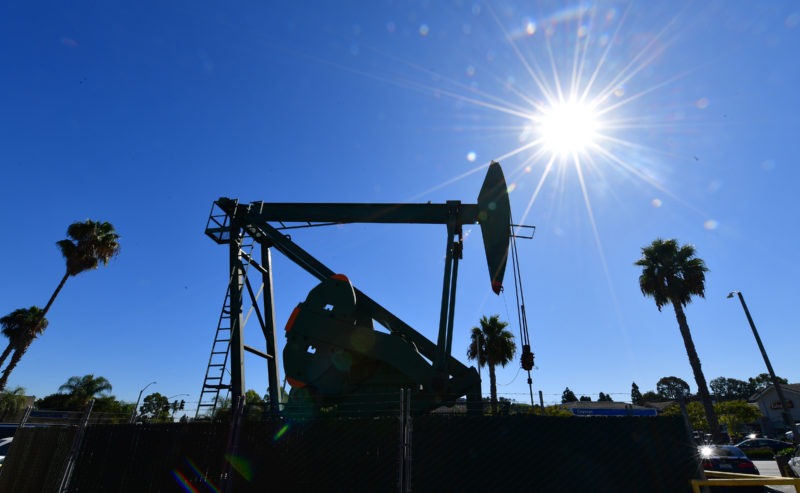OPEC expected to extend output cuts amid global headwinds
Output of oil producers outside OPEC is breaking records, with the US the world’s biggest producer since 2018 and Brazil and Canada have also increased output (Frederic J. BROWN)
London (AFP) – Faced with slowing global economic growth and with abundant stocks putting pressure on oil prices, the OPEC group of oil producers and its partners are set to maintain production cuts when they meet in Vienna on Thursday and Friday.
The cuts of 1.2 million barrels per day from October 2018 levels were originally fixed in December last year and were already extended at OPEC’s last meeting in June.
They are currently due to remain in effect until March 2020 and could be extended “until June, the date of the next summit,” says Tomas Varga, analyst at PVM.
According to Andy Lipow from Lipow Oil Associates the cuts could even be drawn out “until the end of 2020”.
OPEC’s Economic Commission Board — which is a strong indicator of the bloc’s direction — said last week that maintaining cuts into 2020 would lead to a “balanced” market.
– Little room for manoeuvre –
The organisation’s members may well be tempted to follow a cautious course by a forbidding global economic context.
The trade war with the US is acting as a drag on growth in China, normally an avid consumer of oil, while the European economy is also currently stagnating.
Moreover, the output of oil producers outside OPEC is breaking records: the US has been the world’s biggest producer since 2018, Brazil and Canada have also increased output and others such as Norway are planning to do so.
According to the latest official estimates from the US, the country’s total domestic stocks now stand at an enormous 452 million barrels.
Analysts say that taken together these factors will leave OPEC little room for manoeuvre if it wants to fulfil its stated aim of securing “fair and stable prices for petroleum producers”.
Prices have held relatively steady since the last OPEC meeting, with a barrel of Brent crude hovering around the $60 mark, apart from a spike in September sparked by attacks on Saudi oil installations.
While this is a comfortable price for the likes of Russia, whose 2019 budget is predicated on a price of around $42 a barrel, it is too low for countries such as Saudi Arabia.
The Saudi government needs a higher price in order to finance its budget, despite having some of the world’s lowest production costs.
– Further cuts? –
The big unknown in the run-up to the meetings has been the position of Russia.
The world’s second-biggest producer, which since late 2016 has been part of the so-called OPEC+ grouping, has given conflicting signals in recent weeks.
Russia has regularly been exceeding the limits foreseen under the last deal, as have Iraq and Africa’s biggest producer Nigeria.
Saudi Arabia meanwhile has stayed within the quota it had been assigned and in September urged its partners to do likewise.
Lipow says that OPEC’s production cuts “are resting on Saudi Arabia’s shoulders”.
Saudi Arabia may even want “to go further with cuts,” says Markets.com analyst Neil Wilson, in order to boost the IPO of its national oil company Aramco.
The offering has been delayed several times and while investors have baulked at Aramco’s valuation of around $1.7 trillion, this is still less than the Saudi authorities were hoping for.
The attacks on Saudi oil installations in September, claimed by Houthi rebels in Yemen, briefly halved the kingdom’s crude output and highlighted its vulnerability.
They also led to led to heightened tensions with Iran — a fellow OPEC member — whom Saudi Arabia blamed for the attacks, a charge denied by Tehran.
Disclaimer: Validity of the above story is for 7 Days from original date of publishing. Source: AFP.


